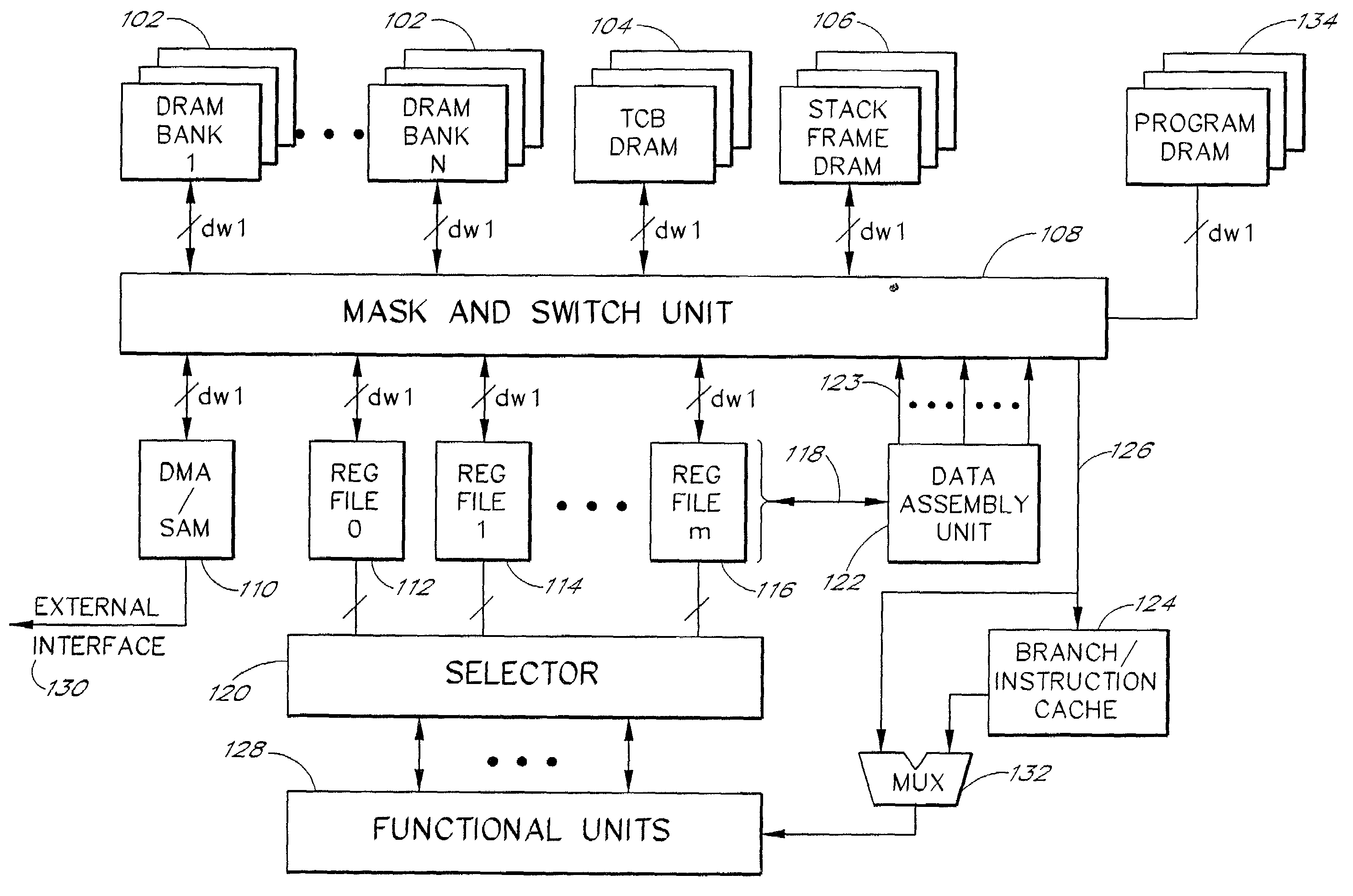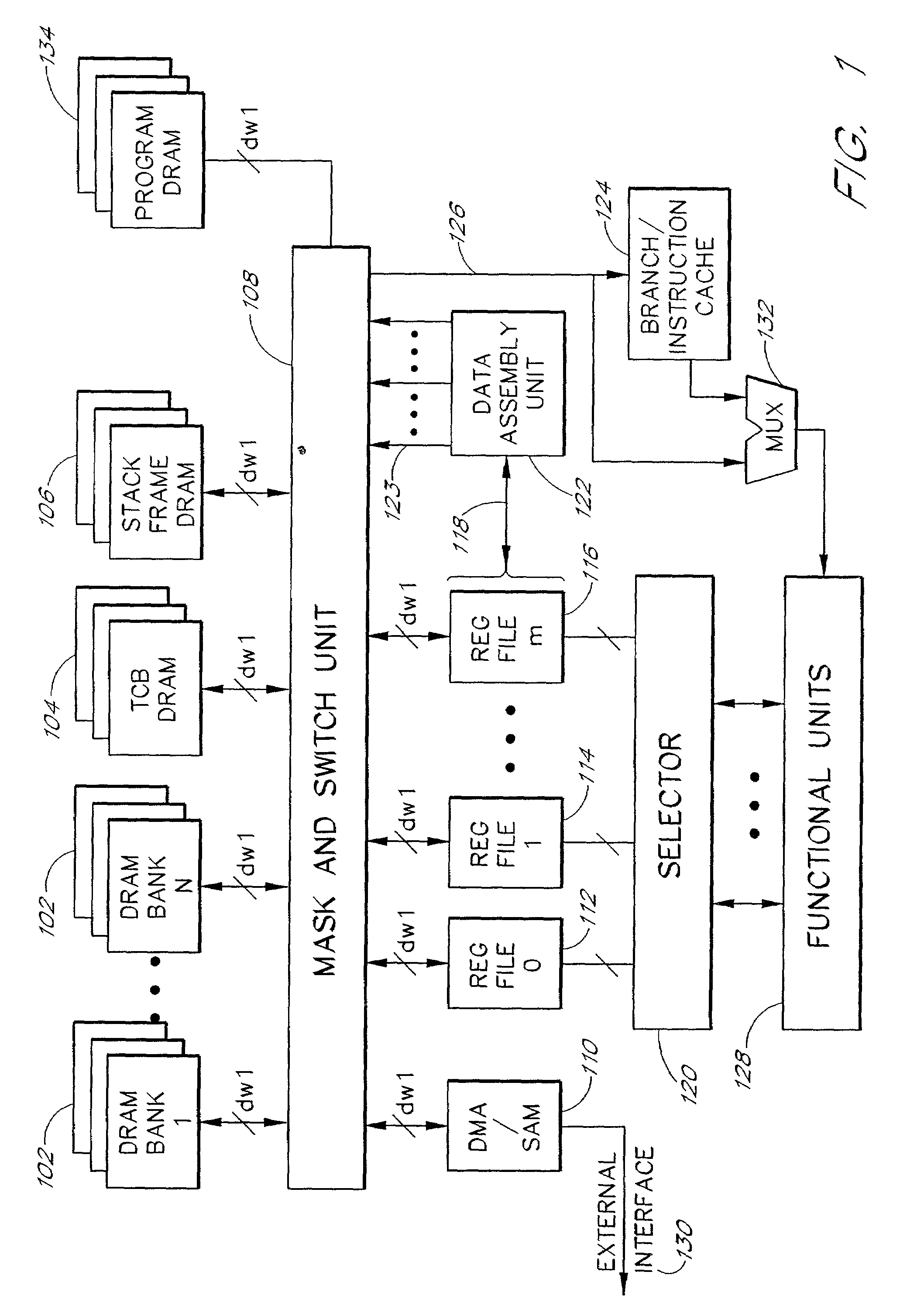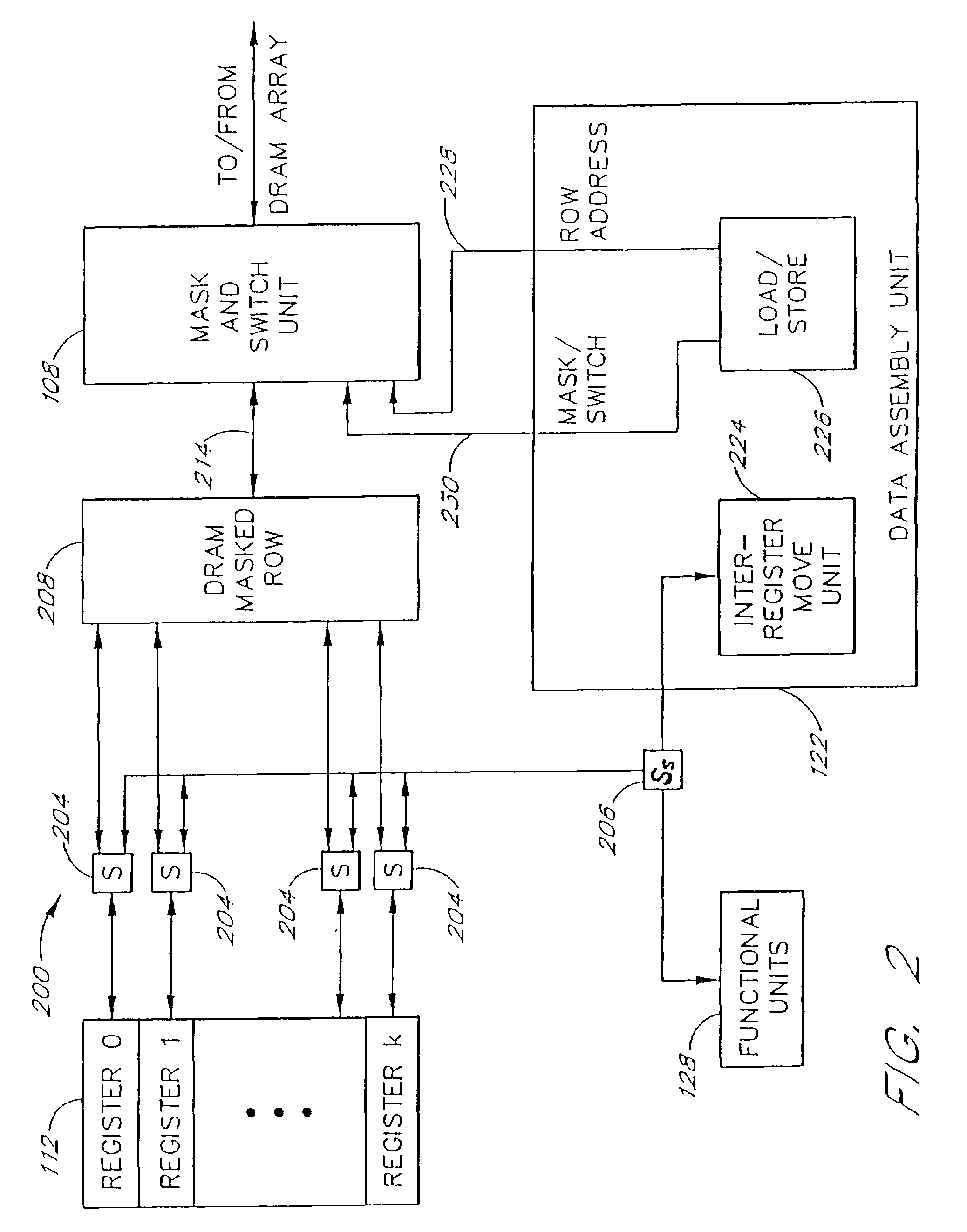Methods for intelligent caching in an embedded DRAM-DSP architecture
a technology of embedded dram and dsp, applied in the field of microsystem architecture, can solve the problems of limiting system performance in memory-intensive processing applications, prohibitively expensive srams of the same size, and slowing down the processor, so as to reduce the amount of instruction cache, and increase the number of rows
- Summary
- Abstract
- Description
- Claims
- Application Information
AI Technical Summary
Benefits of technology
Problems solved by technology
Method used
Image
Examples
Embodiment Construction
[0047]FIG. 1 is a block diagram that illustrates an embodiment of the embedded-DRAM processor architecture of the present invention. A set of N DRAM banks 102 are coupled to a mask and switch unit 108 via data busses of width dw1. The number dw1 is defined in words, and each word contains b bits. In the preferred embodiment, the number dw1 is equal to the number of columns in a DRAM row, for example, dw1=128. The DRAM banks 102 are preferably stacked according to the number of bits, b, in a word as defined by the architecture. For example, if a set of functional units 128 operate on 16-bit quantities, then b=16 and each of the DRAM array 102 is preferably stacked to provide dw1 16-bit words. For example, in the preferred embodiment, the number N is equal to 64, and each DRAM array 102 is organized as a stack of sixteen 16,384-bit DRAMs containing 128 columns and 128 rows. When stacked into 16-bit word modules, a total of 16 megabits are provided among all the DRAM arrays 102. Arrays...
PUM
 Login to View More
Login to View More Abstract
Description
Claims
Application Information
 Login to View More
Login to View More - R&D
- Intellectual Property
- Life Sciences
- Materials
- Tech Scout
- Unparalleled Data Quality
- Higher Quality Content
- 60% Fewer Hallucinations
Browse by: Latest US Patents, China's latest patents, Technical Efficacy Thesaurus, Application Domain, Technology Topic, Popular Technical Reports.
© 2025 PatSnap. All rights reserved.Legal|Privacy policy|Modern Slavery Act Transparency Statement|Sitemap|About US| Contact US: help@patsnap.com



